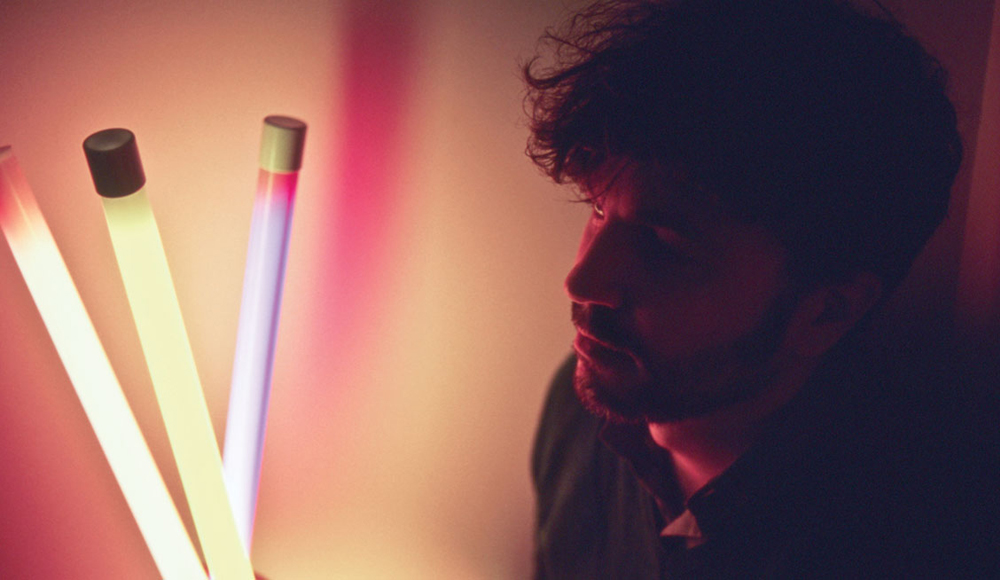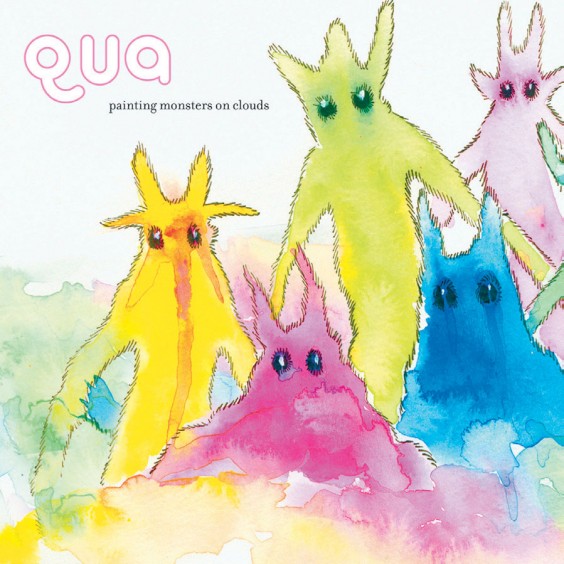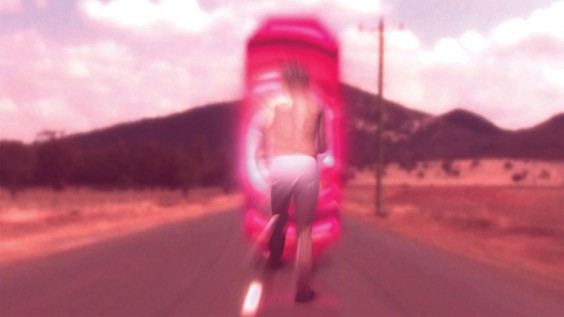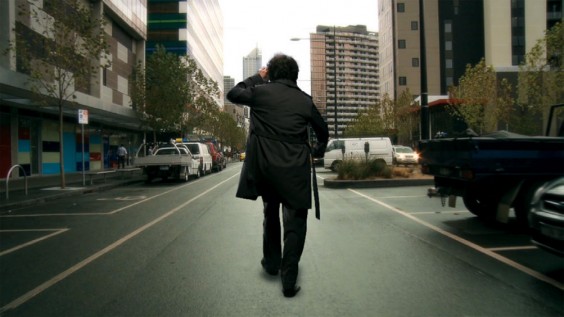This story first appeared in Chromatic: The Crossroads of Color and Music. Order your copy today.
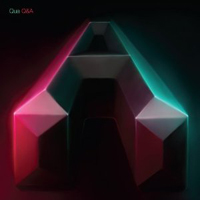 Qua: Q&A (Electric Dreams, 4/27/10)
Qua: Q&A (Electric Dreams, 4/27/10)
Qua: “Circles”
[audio:https://alarm-magazine.com/wp-content/uploads/2010/12/Qua_Circles.mp3|titles=Qua: “Circles”]Given the proliferation of programmable equipment and digital production techniques, kids all over the world are growing up and playing music without ever touching a physical instrument. Who can blame them? Nearly every imaginable texture, pitch, effect, and beat is just a few clicks away. This sea change from analog to digital musicianship hasn’t just changed the way that we create music; it has changed the way that we see music too. Distinctly electronic timbres are coupled with the colorful swirls of an iTunes visualizer, the bright strobe lights of a dance club, and the neon aesthetics of genre giants like Daft Punk and MIA.
Though he grew up playing guitar in rock bands, Cornel Wilczek, better known as Australian electronic artist Qua, set aside his guitar and took the solo electronic road early in his career. His decision was made possible by a discovery of electronic music, a genre wherein Wilczek realized that he could become, as he says, a “one-stop shop.” He could handle production and technical duties without having to rely on anyone but himself.
At 17, Wilczek won a Yamaha guitar competition and moved to the USA to do session work and guitar demonstrations. “It was really quite amazing at the time,” Wilczek says, “but it was also the end of an era for me, because I had met so many of my guitar and music idols who were complete assholes. I actually came back [to Australia] and stopped playing guitar for about five years, and that’s when I found electronic music.”
The son of a German father and an Italian mother, Wilczek grew up in Adelaide listening to Italian pop, krautrock, and metal. And with grandparents who played Italian folk instruments, he found himself frequently immersed in the communal sharing of live music. With influences spanning the globe and many decades, Wilczek records and performs a completely postmodern form of music — progressive musical pastiches made possible by technology. He does it all, however, within the bounds of music theory and composition, learned while studying soundtrack production and animation at the Royal Melbourne Institute of Technology (RMIT).
While in school, a lecturer named Phil Brophy (founder of experimental music project → ↑ →) exposed Wilczek to notable works of sound art, musique concrète, and other experimental projects with which Wilczek immediately identified. He realized that he had been making the same type of music, but he lacked the background and context to give it greater meaning and coherence. He credits his education with giving him a structural framework and a useful set of parameters for creating music.
Moreover, attending university revealed an alternative route, separate from the traditional band-based, ego-driven music industry: scoring and composing. Though he had never realized it, he found that scoring films and creating soundtracks to accompany visuals came naturally. “I was involved in narratives as much as I was into music,” Wilczek says. “So it just seemed like a really logical decision to study soundtrack.” In fact, his music had always grown from an animation idea in the back of his mind. “It’s often the seed…and that idea can be really simple, more sensation-based, rather than a linear narrative. That very simple idea begins as a little sketch, and then it gives my music a bit of meaning. It’s a way to get some momentum and get things moving.”
Wilczek’s background in animation comes through in his music. Listening to a Qua album is an intensely aural and visual experience, as an expansive conglomeration of sounds accumulate on top of each other, like ever-increasing layers of paint on a canvas. Qua’s music, and electronic music in general, can take on a timbre distinct from that produced solely by analog instruments. The various oscillations and pre-programmed sequences translate into a different palette of “colors” than their analog counterparts. On his debut album, Forgetabout, down-tempo compositions utilize ambient sounds such as the white-noise locked groove of a record, creating a restrained sonic palette. After a lengthy build, Wilczek will shift gears out of the blue, completely deconstructing the melody only to return at the end with the parts rearranged. He manages to avoid the trappings of equipment overload, deftly pushing forward and pulling back.
Prior to recording his 2010 album, Q+A (released earlier in Australia), Wilczek began as he always does, with a feeling, a powerful inkling that dictates the direction of the project. This time, it was a reaction to long hours in his studio (Electric Dreams), working with bands, producing records, and scoring films. “The thought of sitting down, listening to stuff on headphones, and being academic and building things horizontally freaked me out, and all I just wanted to do was something really primal and really simple,” Wilczek says. “I found that a really great release was going out and dancing, and I found that really primal, simple music is just intrinsically accessible, and a bit more four-on-the-floor. This idea of having fun and bringing some color and a sense of ecstasy just came really naturally.”
Q+A succeeds in translating a primal exuberance without abandoning the challenging, considered approach of past albums. Right out of the gate, a squealing synth line loops like a space-age carousel, bouncing over live drums and a danceable guitar riff reminiscent of the Talking Heads. One gets the sense that Wilczek, while indulging in a cathartic release of dance pop, is also completely assured in his approach.
The 2008 album Silver Red takes a different approach. With drummer Laurence Pike of Pivot (now PVT), Wilczek improvised over a live recording. The result is a collection of four long-form compositions that breathe and develop slowly, at times taking on traditional rock-band characteristics, complete with post-rock guitar work and dynamic live drums. Even venturing into new territories as disparate as pop and avant-garde experimentalism, the album is essentially Qua, with chopped up synths, arpeggio breakdowns, and frequent melodic brilliance.
These days, Wilczek spends his time at his own commercial enterprise, Electric Dreams Studio. “It’s still growing as we speak,” Wilczek explains. “We ration our time between love projects and commercial projects. I do about 4–5 albums a year for other artists. All of that equals about 80% of my time. So my music is probably 20% of it, which is really all I need.”
Wilzcek has found that by working on projects with other artists, he is able to return to his own music with a clear, concise vision. Though not directly working his own music, problem solving and managing crises while producing have made him incredibly efficient when the time comes to work as Qua. In addition, working with bands like Wagons, a popular alt-country group from Australia, has sparked Wilczek’s interest in previously dormant modes of music.
“We’ve discovered our love for rock music,” he says, “and we’re working on a band together now that is more on the ’80s hard-rock side. I’ve been working on [Electric Dreams co-worker] Jojo Petrina’s album, and we’ve ended up in a band together as well, which is a collaboration of early-’70s, Italian, Morricone-esque soundtrack stuff. [It] wouldn’t have happened if we didn’t have the platform to engage in not just music but relationships as well. It’s amazing; we’re just continuously working with people that we share ideas with, and as a result, the collaborations kick in fast.”
Wilczek has made a habit of collaboration as of late. For him, making music has become a process of sharing ideas as opposed to creative compromise. The future of Qua, like the music, is subject to change at a moment’s notice, but Wilczek notes that future material will have more live instrumentation and fewer electronics. As he vacillates between digital and analog, the coloring of the music changes accordingly, each new sound another paintbrush with which to create. And as more musicians become well versed in a highly digitized world, people like Wilczek could become the old breed, among a minority of electronic musicians who still play live instruments. Either way, Qua’s music exists as proof that innovation and original ideas — not instrument choice or flashiness — are at the root of great music.

